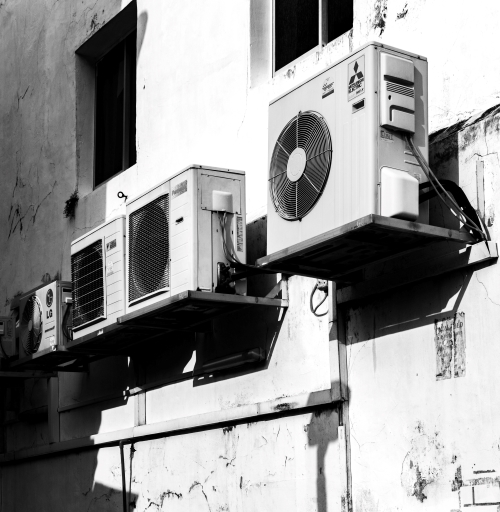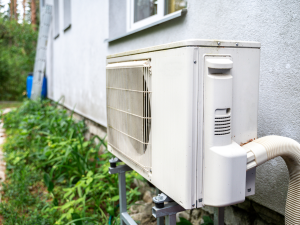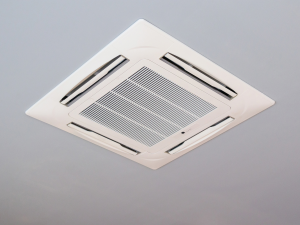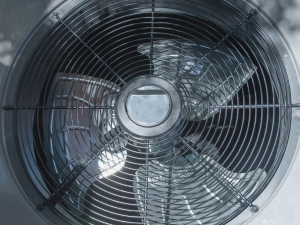Heating and air conditioning systems maintain a favorable temperature in all spaces. Most homeowners have experienced temperature inconsistencies at one time or another, and it can be frustrating. The amount of air that each room gets depends on damper settings.
Unknown to many, airflow can be controlled manually via an HVAC duct damper adjustment. Want to know how you can eliminate hot or cold spots in your home? Keep reading as we discuss how to adjust the air duct damper and improve your home’s comfort.
What are dampers?
Before trying to change them, it’s vital to understand what dampers are. These are plate-shaped devices that regulate the amount of air that passes through HVAC vents and ducts. When adjusted, dampers change the indoor temperatures by pushing hot or cold air into some sections in the house. Adjusting dampers for your air conditioning is a simple process that enables homeowners to increase or reduce the amount of air that enters every room.
If you are well-versed in how your HVAC system works, you may know where the dampers are located. They are usually positioned in the branches or take-offs of the duct systems. Manual dampers have a rod that can be adjusted using a lever or screwdriver.
What to do before adjusting the damper
If you are experiencing inconsistent temperatures, we know how uncomfortable this can get. And once you know how to adjust dampers for air conditioning, you will eliminate hot spots or cold spots in your home. However, you need to ensure that you open every vent or register in the room. Monitor the temperature and determine the adjustments that need to be made for every room. Also, you need to be sure where each duct goes.
How to adjust dampers for air conditioning
- Start by opening the air conditioning vents
You need to open all the air conditioning registers or vents before you start to adjust the air conditioning duct dampers. If your HVAC has a fan setting, turn it on. If you are using a system that does not have fan settings, change the thermostat settings to keep the system operating as you adjust the damper.
- Open the dampers
Not all HVAC systems have dampers. Once you find the dampers on your system, move each lever to point in the direction that the duct travels. The airflow will operate at full capacity when the balancing damper opens.
- Make the changes
If you have rooms that are not sufficiently cooled, you can close the balancing dampers that lead to the rooms. This will redirect air to rooms that are not sufficiently cooled. If you have rooms that are barely used, you can close the dampers on the ducts that lead to these rooms since they do not require much cooling. Closing the dampers will not completely restrict the flow of air in the rooms. Rather, the rooms will receive a small amount of cooled air.
- Check the temperatures in each room
Once you adjust the dampers, you should start noting differences in temperature. However, since this is a manual process, you need to ascertain that the temperature changes are optimal. You can do this by using an indoor thermometer to get the precise temperature reading. You can also check whether all rooms are comfortable. They should not be too cold or too warm.
If the temperatures in the rooms are not comfortable, make small changes to the damper. You may need to make several adjustments to achieve the desired temperatures. Once you get the optimal temperature in every room, draw a line on each furnace duct using a permanent marker.
HVAC duct damper adjustment tips
- Always start small- No matter how uncomfortable the temperatures get, you need to be extremely careful when adjusting the damper. Start with small changes and monitor the temperatures. While it may seem insignificant, a slight adjustment in one room can make a major difference in the entire home. If a room is too cold in the summer, close the vent slightly to stop some of the air from entering the room. If the room is too hot, open the damper slightly to add more airflow.
- Adjusting the damper from winter to summer- Once you make changes to your airflow, you may need to repeat the process when seasons change. Marking the damper will make the process easier. For instance, you can mark with a simple letter such as S or W, so when seasons change, you do not need to go through the entire process again.
Still experiencing cold or hot spots even after adjusting dampers?
If you notice that you are still experiencing hot or cold spots even after the HVAC duct damper adjustment, your HVAC system could be the culprit. Here are some of the reasons why adjusting the dampers may not work:
- You have poor airflow- If you have poor airflow in your home, adjusting the damper will not work. Dirty filters are the most common cause of poor airflow since they block necessary airflow that is vital in keeping the home comfortable. Dirty filters can shorten the lifespan of your HVAC system and also drive-up energy costs.
- Air leaking through the ducts- How often do you inspect the ducts? Unsealed ductwork is the common culprit to air leaks in most homes. Try duct sealing to fix cold or hot spots in the home. If you need assistance, schedule an appointment with your AC technician.
- Blocked air vents- Check for blocked air vents in areas that have cold or hot spots. Ensure that the air vents are not blocked by removing furniture and other items that could be restricting the flow of air into the rooms.
While adjusting the damper may take some time, it’s the best measure to maximize the efficiency of the HVAC system. Every homeowner deserves a comfortable home. If adjusting the damper does not help, schedule an appointment with an HVAC expert.








